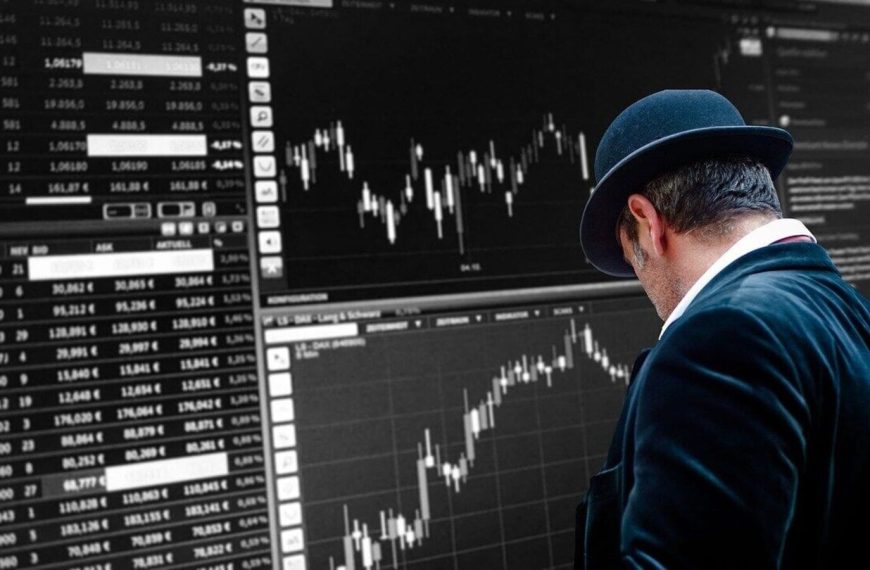The ongoing trade tensions under President Donald Trump have sent shockwaves through the financial markets, leading to a notable decline in stock values and a rise in bond prices. As the trade war escalates, Federal Reserve Chair Jerome Powell issued a warning that the repercussions could be more severe than previously thought, including heightened inflation and a slowdown in economic growth. These developments mark a critical moment for investors as they navigate the uncertain landscape.
Market Reactions to Tariff Concerns
The recent selloff in equities has intensified, with the S&P 500 experiencing its largest two-day drop since March 2020, resulting in a staggering loss of over $5 trillion in market value. The index fell by 6% on Friday alone, while the Nasdaq 100 officially entered bear market territory. In response, Treasury yields for 10-year bonds decreased by three basis points to 3.99%, and the dollar appreciated by 1%.
- Key Market Movements:
- S&P 500: Down 6%
- Nasdaq 100: Down 6.1%
- Dow Jones Industrial Average: Down 5.5%
- Cboe Volatility Index: Reached its highest level since April 2020
Expert Insights on Economic Outlook
Concerns over a potential recession have intensified, with analysts like Doug Ramsey, Chief Investment Officer at the Leuthold Group, stating, “The action within the market is shouting recession.” Despite a solid jobs report, the actual economic impact of tariffs has yet to be felt, leaving many economists apprehensive.
Michael Hartnett of Bank of America has urged investors to “short” risk assets until a clear pivot away from tariffs occurs. Similarly, Mark Haefele from UBS Global Wealth Management has downgraded his outlook on U.S. stocks, advising caution amid the trade war fallout.
Potential Opportunities Amidst the Decline
Despite the gloomy forecast, some experts believe there could be strategic buying opportunities. Ed Yardeni, from Yardeni Research, suggests that it might be time to capitalize on the market dip. Notably, Bill Gross has hinted at potential market openings in the upcoming week, emphasizing that the current financial landscape is overly leveraged.
- Valuation Insights:
- The S&P 500’s trailing price-to-earnings ratio typically drops to an average of 15.6 during downturns, yet it currently stands at 22.
David Lebovitz from JPMorgan Asset Management believes that stocks are nearing dip-buying territory and that the U.S. economy may avoid a recession triggered by tariffs. He has been monitoring the S&P 500 closely, seeking attractive entry points.
Economic Forecasts and Federal Reserve Actions
JPMorgan Chase has revised its forecast, now predicting a contraction in real GDP due to the tariffs, projecting a -0.3% growth rate for the year. The consensus among economists is that tariffs will likely increase inflation while stifling growth, which may compel the Federal Reserve to act sooner than anticipated.
Anthony Saglimbene of Ameriprise suggests that the Fed may need to consider rate cuts if labor market indicators worsen in the wake of fiscal policy changes. Currently, money markets are pricing in nearly four quarter-point rate reductions for the year ahead.
Summary of Market Movements
As traders reassess their positions, many are shifting to defensive sectors amid recession fears. The S&P 500 has been on a declining trajectory, down significantly from its February peak, while fund managers have pulled out $4.7 billion from U.S. stocks recently.
- Recent Market Performance:
- S&P 500: Down 6%
- Nasdaq 100: Down 6.1%
- Dow Jones: Down 5.5%
- MSCI World Index: Down 6%
Conclusion
The current market turmoil is a stark reminder of the unpredictable nature of global trade dynamics and their far-reaching effects on the economy. Investors are urged to stay informed and consider both risks and opportunities as they navigate this challenging environment.











